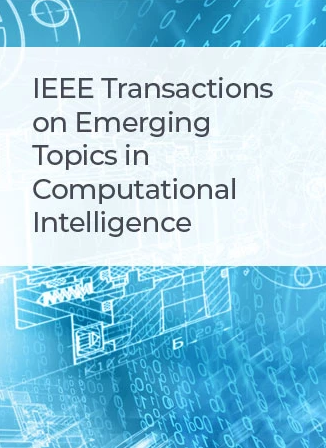Data-Driven Container Marking Detection and Recognition System With an Open Large-Scale Scene Text Dataset
IF 5.3
3区 计算机科学
Q1 COMPUTER SCIENCE, ARTIFICIAL INTELLIGENCE
IEEE Transactions on Emerging Topics in Computational Intelligence
Pub Date : 2024-03-27
DOI:10.1109/TETCI.2024.3377680
引用次数: 0
Abstract
With the widespread use of containers, the demand for Container Marking Detection and Recognition (CMDR) is gradually increasing. The use of deep learning algorithms can greatly improve the efficiency of marking detection and recognition. However, there is still a lack of research on CMDR in both academia and industry, resulting in the current task being completed manually and inefficiently. In this paper, we probe into the importance of data-driven and task paradigms for CMDR tasks. Firstly, we constructed an open large scale container surface marking text dataset called ContainerText. This dataset consists of 12 k high-resolution images and provides two types of annotation information: bounding box used for detection and text for recognition tasks. In addition, we also propose an efficient semi-automatic annotation method based on deep learning, which reduces the cost of manual annotation. Subsequently, we have innovatively proposed a CMDR method combining Scene Text Recognition (STR) with CMDR tasks. The method based on STR can locate and recognize container marking from a fine-grained level. We conducted a comprehensive series of experiments on the ContainerText dataset using state-of-the-art (SOTA) scene text detection and scene text recognition models. The experimental results demonstrate that the CMDR method, based on STR, exhibits exceptional adaptability and feasibility. All experimental results obtained from the ContainerText dataset will act as performance benchmarks for future researchers. Finally, an automated Container Marking Image Acquisition Mechanism (CMIAM) are construucted, which can effectively avoid complex lighting in the workshop environment and achieve high-quality and automated image acquisition. We have conducted extensive experiments to measure the distance, resolution, and field of view required for clearly capturing container markings. Our research providing reference for future CMDR research from task solution and hardware selection.使用开放式大规模场景文本数据集的数据驱动型集装箱标记检测和识别系统
随着集装箱的广泛使用,对集装箱标识检测和识别(CMDR)的需求逐渐增加。使用深度学习算法可以大大提高标识检测和识别的效率。然而,目前学术界和工业界对 CMDR 的研究还很匮乏,导致目前的任务只能靠人工完成,效率低下。本文探讨了数据驱动和任务范式对 CMDR 任务的重要性。首先,我们构建了一个名为 ContainerText 的开放式大规模集装箱表面标记文本数据集。该数据集由 12 k 幅高分辨率图像组成,提供两种类型的注释信息:用于检测的边界框和用于识别任务的文本。此外,我们还提出了一种基于深度学习的高效半自动标注方法,从而降低了人工标注的成本。随后,我们创新性地提出了一种将场景文本识别(STR)与 CMDR 任务相结合的 CMDR 方法。该方法基于场景文本识别(STR),能够从细粒度层面定位和识别容器标识。我们使用最先进的(SOTA)场景文本检测和场景文本识别模型在 ContainerText 数据集上进行了一系列综合实验。实验结果表明,基于 STR 的 CMDR 方法具有出色的适应性和可行性。从 ContainerText 数据集获得的所有实验结果将作为未来研究人员的性能基准。最后,我们构建了自动化集装箱标记图像采集机制(CMIAM),该机制可有效避免车间环境中的复杂光照,实现高质量的自动化图像采集。我们进行了大量实验,测量了清晰捕捉集装箱标记所需的距离、分辨率和视场。我们的研究从任务解决方案和硬件选择方面为未来的 CMDR 研究提供了参考。
本文章由计算机程序翻译,如有差异,请以英文原文为准。
求助全文
约1分钟内获得全文
求助全文
来源期刊

IEEE Transactions on Emerging Topics in Computational Intelligence
Mathematics-Control and Optimization
CiteScore
10.30
自引率
7.50%
发文量
147
期刊介绍:
The IEEE Transactions on Emerging Topics in Computational Intelligence (TETCI) publishes original articles on emerging aspects of computational intelligence, including theory, applications, and surveys.
TETCI is an electronics only publication. TETCI publishes six issues per year.
Authors are encouraged to submit manuscripts in any emerging topic in computational intelligence, especially nature-inspired computing topics not covered by other IEEE Computational Intelligence Society journals. A few such illustrative examples are glial cell networks, computational neuroscience, Brain Computer Interface, ambient intelligence, non-fuzzy computing with words, artificial life, cultural learning, artificial endocrine networks, social reasoning, artificial hormone networks, computational intelligence for the IoT and Smart-X technologies.
 求助内容:
求助内容: 应助结果提醒方式:
应助结果提醒方式:


